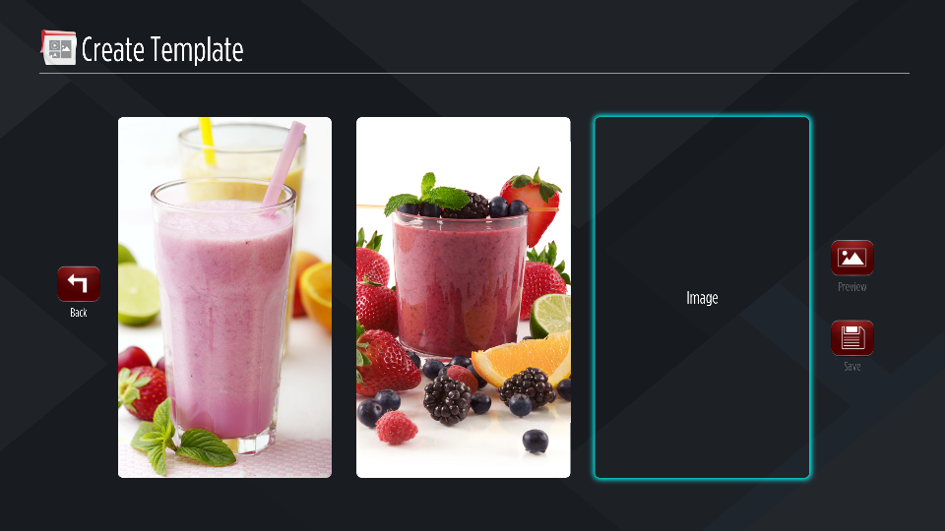VsignLite is a signage application runs without CMS and managed through TV. TV software is integrated with it. In following sections Vsign Lite application will be described with further details under the headlines below:
| Requirements | |
| TV Platform | MB135VS |
| Firmware Version | 7.33.0.0 |
| Language Options | English, Turkish |
| Hardware Requirements | USB |
Table 1: Application Specifications
During the Tv’s setup, “AutoLaunch” option should be selected as “Vsign Lite”. Later, every time the TV restarts, the application will open. Additionally this can be changed on Menu -> Settings -> Signage -> Power Up Settings -> Auto Launch.
The VsignLite application consists of three main parts. These are player, schedule and template sections. Moreover, there are the import/export section for backup / export of application settings and to switch to VSign there is a “Switch to Vsign“ part.
Figure 1: The Main Screen
Using this screen, the inserted USB memory can be viewed, erased, played, and transferred to another USB memory. Various filtering and sorting operations can be done from the menu section above. In addition, the channels created in the section over time are played here.
Figure 2: The Player Screen
Pressing the “OK” button on any file opens the menu for file-related operations. The options described below can be selected and processed.
Figure 3: File Management
Multiple selection mode is activated by pressing “OK” button on “SELECT” option on File Management menu. Then select the files you want to select with the “OK” button and cancel them. During this process, you can go to different folders and select the files there.
Figure 4: Main-Selection Mode
Options appear up when multi-select mode is on. These operations can be done to the selected files as explained below.
By using Schedule screen, a channel can be created, programs can be created within the channel, they can be viewed and edited. The channels number are limited to four.
Figure 5: Schedule Screen
In the menu, the channels are displayed on the screen in accordance with the time information on the top left and down. With navigation, it can be switched through programs. Detailed information about the focused program can be found on the right-hand panel.
Navigate to an empty or occupied area and press the “OK” button. In the empty area, channel and program addition screen, in the occupied area editing screen are opened. Images, videos and templates can be added to the channel as content.
If the rightmost space (Add Channel) is selected, a new channel will be created and the screen will pop up to create our first program.
If an empty space is selected in a previously created channel, the new program is added to the channel.
If the occupied area is selected in a previously created channel, the selected program will be edited.
Figure 6: Channel/Program Editing Screen
Supported files are written below.
This screen displays the predefined templates and the user fills them and prepares them for use. User-created templates are kept in the “My Templates” folder. They can be played, edited and deleted from here.
Figure 7: Template Screen
Scroll to one of the previously defined templates and press “OK”. When the “OK” key is pressed on the zones, the compatible contents in the memory are listed. Single or multiple selections can be made here. The template can be previewed with the “Preview” button on the right and the “Save” button can be selected and saved.

Figure 8: Adding Templates
Figure 9: Adding Contents to Templates
Items in Create Template section are described below.
Using this menu, the TV settings can be transferred to another TV.
With this menu, the users can be transferred to VSign Application. In addition, the VSign application will start to open when the television is turned on.
The user can rotate the screen 90 degrees clockwise or counterclockwise by selecting Portrait1 or Portrait2 from Menu -> Settings -> Signage -> Controls -> OSD Orientation. The application will be rotated vertically.

